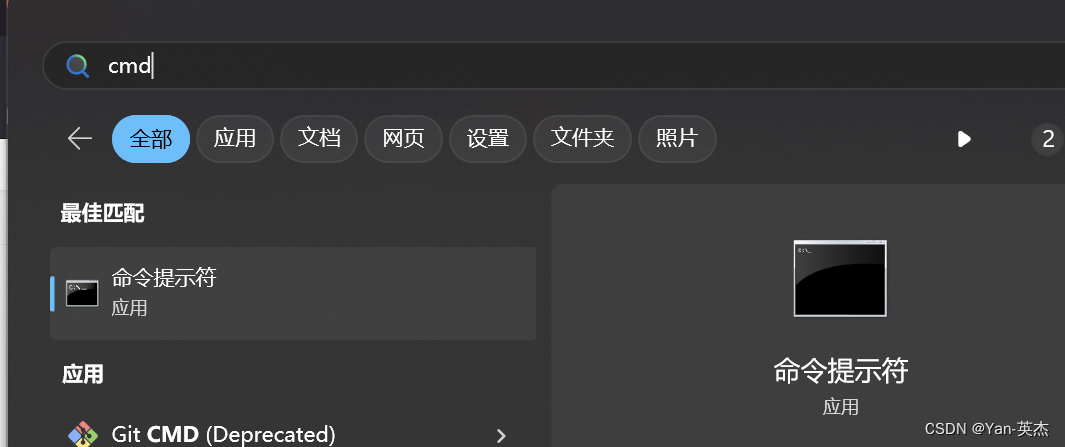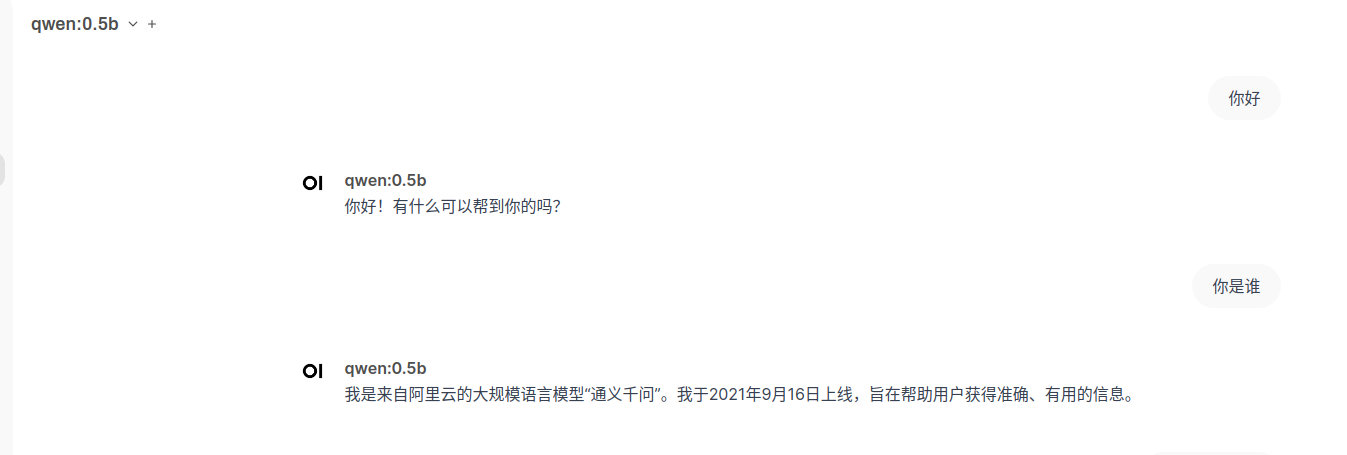参考文章:https://blog.csdn.net/red_stone1/article/details/122974771
数据集:

打标签:
import os
# os.path.join: 每个参数都是一个路径段,将它们连接起来形成有效的路径名。
train_txt_path = os.path.join("data", "catVSdog", "train.txt")
train_dir = os.path.join("data", "catVSdog", "train_data")
valid_txt_path = os.path.join("data", "catVSdog", "test.txt")
valid_dir = os.path.join("data", "catVSdog", "test_data")
def gen_txt(txt_path, img_dir): # 标签,图像
f = open(txt_path, 'w') # 打开一个文件,创建一个file对象
# os.walk: 遍历一个目录树,返回目录中的每个目录和文件
# os.walk每次迭代都会返回一个元组:
#(当前目录的路径字符串,当前目录中所有子目录名称,当前目录所有文件名称)
for root, s_dirs, _ in os.walk(img_dir, topdown=True): # 获取 train文件下各文件夹名称
# topdown用于决定遍历目录树的顺序
# 以猫狗大战数据集为例,这里的s_dirs是cat和dog文件夹
for sub_dir in s_dirs: # 对于猫或狗文件夹里的每个文件(每张图片)遍历
i_dir = os.path.join(root, sub_dir) # 获取各类的文件夹 绝对路径 ?
img_list = os.listdir(i_dir) # 获取类别文件夹下所有png图片的路径 ? 应该是jpg
# os.listdir: 用于返回指定目录中的所有文件和目录的名称列表
for i in range(len(img_list)): # 遍历一个类别中的所有图片
if not img_list[i].endswith('jpg'): # 若不是png文件,跳过 ? 应该是jpg
continue
#label = (img_list[i].split('.')[0] == 'cat')? 0 : 1
label = img_list[i].split('.')[0] # 按.分割,并取点后的**第一个部分**
# 将字符类别转为整型类型表示
if label == 'cat':
label = '0'
else: # label == 'dog'
label = '1'
img_path = os.path.join(i_dir, img_list[i])
line = img_path + ' ' + label + '\n'
f.write(line) # 把打好的标签写在.txt里
f.close()
if __name__ == '__main__':
# 共生成两个图片索引文件:train.txt和test.txt
gen_txt(train_txt_path, train_dir)
gen_txt(valid_txt_path, valid_dir)
构建数据集:
from PIL import Image
from torch.utils.data import Dataset
class MyDataset(Dataset):
def __init__(self, txt_path, transform = None, target_transform = None):
fh = open(txt_path, 'r') # 打开图片索引文件
imgs = [] # 存储元组:(图片路径,类别(0或1))
for line in fh: # 迭代读取文件的行
line = line.rstrip() # 使用rstrip方法去除行末的空白符(包括\n)
words = line.split() # 将字符串按空白符(空格、制表符等)进行分割
imgs.append((words[0], int(words[1]))) # 类别转为整型int
self.imgs = imgs
# self.transform和self.target_transform:根据读入的参数赋值
self.transform = transform
self.target_transform = target_transform
# __getitem__方法和__len__方法均继承自父类Dataset
def __getitem__(self, index):
fn, label = self.imgs[index]
img = Image.open(fn).convert('RGB')
#img = Image.open(fn)
if self.transform is not None:
img = self.transform(img) # self.transform对图片进行处理,推测传入的是一个函数名
return img, label
def __len__(self):
return len(self.imgs)
加载数据集&数据预处理:
from torchvision import transforms
# transforms.Compose接受一个列表或元组作为参数,列表中的每个元素都是一个数据转换操作
# transforms.Compose返回一个串行操作序列
pipline_train = transforms.Compose([
#随机旋转图片
transforms.RandomHorizontalFlip(),
#将图片尺寸resize到227x227(这是AlexNet的要求)
transforms.Resize((227,227)),
#将图片转化为Tensor格式
transforms.ToTensor(),
#正则化(当模型出现过拟合的情况时,用来降低模型的复杂度,加快模型收敛速度)
transforms.Normalize((0.5, 0.5, 0.5), (0.5, 0.5, 0.5)) # 均值为0.5,标准差为0.5
#transforms.Normalize(mean = [0.485, 0.456, 0.406],std = [0.229, 0.224, 0.225])
])
pipline_test = transforms.Compose([
#将图片尺寸resize到227x227
transforms.Resize((227,227)),
transforms.ToTensor(),
transforms.Normalize((0.5, 0.5, 0.5), (0.5, 0.5, 0.5))
#transforms.Normalize(mean = [0.485, 0.456, 0.406],std = [0.229, 0.224, 0.225])
])
train_data = MyDataset('./data/catVSdog/train.txt', transform=pipline_train)
test_data = MyDataset('./data/catVSdog/test.txt', transform=pipline_test)
# train_data 和test_data包含多有的训练与测试数据,调用DataLoader批量加载
# batch_size: 每个小批量(batch)包含的样本数量。
# 在训练过程中,模型不会一次性处理整个数据集,而是分成多个小批量逐一输入模型进行训练
# shuffle: 数据洗牌-随机打乱数据集的顺序-使模型在训练时不会对数据顺序敏感
trainloader = torch.utils.data.DataLoader(dataset=train_data, batch_size=64, shuffle=True)
testloader = torch.utils.data.DataLoader(dataset=test_data, batch_size=32, shuffle=False)
# 类别信息也是需要我们给定的
classes = ('cat', 'dog') # 对应label=0,label=1
查看最终制作的数据集(图片&标签):
import numpy as np
examples = enumerate(trainloader) # 方便迭代trainloader中的每个批量数据并同时获取它们的索引
batch_idx, (example_data, example_label) = next(examples) # next: 获取枚举对象的下一个元素
# 批量展示图片
for i in range(4):
plt.subplot(1, 4, i + 1) #
plt.tight_layout() #自动调整子图参数,使之填充整个图像区域
img = example_data[i]
img = img.numpy() # FloatTensor转为ndarray
img = np.transpose(img, (1,2,0)) # 把channel那一维放到最后
img = img * [0.5, 0.5, 0.5] + [0.5, 0.5, 0.5]
plt.imshow(img)
plt.title("label:{}".format(example_label[i]))
plt.xticks([])
plt.yticks([])
plt.show()
搭建AlexNet神经网络结构:
class AlexNet(nn.Module):
"""
Neural network model consisting of layers propsed by AlexNet paper.
"""
def __init__(self, num_classes=2):
"""
Define and allocate layers for this neural net.
Args:
num_classes (int): number of classes to predict with this model
"""
super().__init__() # 继承父类的__init__方法
# input size should be : (b x 3 x 227 x 227)
# The image in the original paper states that width and height are 224 pixels, but
# the dimensions after first convolution layer do not lead to 55 x 55.
# nn.Sequential是一个用于构建神经网络的容器,它按顺序将各个模块(层)组合在一起,形成一个神经网络模型
self.net = nn.Sequential(
nn.Conv2d(in_channels=3, out_channels=96, kernel_size=11, stride=4), # (b x 96 x 55 x 55)
# nn.Conv2d还可以继续添加参数:padding 表示边缘填充空白像素的宽度
nn.ReLU(),
nn.LocalResponseNorm(size=5, alpha=0.0001, beta=0.75, k=2), # 局部响应归一化
# 目前更多采用的是Batch Normalization
nn.MaxPool2d(kernel_size=3, stride=2), # (b x 96 x 27 x 27)
nn.Conv2d(96, 256, 5, padding=2), # (b x 256 x 27 x 27)
nn.ReLU(),
nn.LocalResponseNorm(size=5, alpha=0.0001, beta=0.75, k=2),
nn.MaxPool2d(kernel_size=3, stride=2), # (b x 256 x 13 x 13)
nn.Conv2d(256, 384, 3, padding=1), # (b x 384 x 13 x 13)
nn.ReLU(),
nn.Conv2d(384, 384, 3, padding=1), # (b x 384 x 13 x 13)
nn.ReLU(),
nn.Conv2d(384, 256, 3, padding=1), # (b x 256 x 13 x 13)
nn.ReLU(),
nn.MaxPool2d(kernel_size=3, stride=2), # (b x 256 x 6 x 6)
)
# classifier is just a name for linear layers
self.classifier = nn.Sequential(
nn.Dropout(p=0.5, inplace=True), #
nn.Linear(in_features=(256 * 6 * 6), out_features=500),
nn.ReLU(),
nn.Dropout(p=0.5, inplace=True),
nn.Linear(in_features=500, out_features=20),
nn.ReLU(),
nn.Linear(in_features=20, out_features=num_classes),
)
def forward(self, x):
"""
Pass the input through the net.
Args:
x (Tensor): input tensor
Returns:
output (Tensor): output tensor
"""
x = self.net(x)
x = x.view(-1, 256 * 6 * 6) # reduce the dimensions for linear layer input
# x.view: 改变张量形状。
# -1表示自动计算,后面的256*6*6表示将第二个维度变成这个尺寸,以便作为全连接层的输入。
return self.classifier(x)
将模型部署到GPU/CPU:
#创建模型,部署gpu
device = torch.device("cuda" if torch.cuda.is_available() else "cpu")
model = AlexNet().to(device) # 这里的AlexNet是类名,通过.to(device)方法将模型移动到指定的设备
#定义优化器
optimizer = optim.Adam(model.parameters(), lr=0.001) # PyTorch提供的Adam优化器
# model.parameters()返回模型中所有需要训练的参数迭代器
# lr是Adam优化器的学习率,控制每次参数更新的步长大小
定义训练过程:
def train_runner(model, device, trainloader, optimizer, epoch):
#训练模型, 启用 BatchNormalization 和 Dropout, 将BatchNormalization和Dropout置为True
model.train()
total = 0
correct =0.0
#enumerate迭代已加载的数据集,同时获取数据和数据下标
for i, data in enumerate(trainloader, 0):
inputs, labels = data
#把模型部署到device上
inputs, labels = inputs.to(device), labels.to(device)
#初始化梯度
optimizer.zero_grad()
#保存训练结果
outputs = model(inputs)
#计算损失和
#多分类情况通常使用cross_entropy(交叉熵损失函数), 而对于二分类问题, 通常使用sigmod
loss = F.cross_entropy(outputs, labels)
#获取最大概率的预测结果
#dim=1表示返回每一行的最大值对应的列下标
predict = outputs.argmax(dim=1)
total += labels.size(0)
correct += (predict == labels).sum().item()
#反向传播
loss.backward()
#更新参数
optimizer.step()
if i % 100 == 0:
#loss.item()表示当前loss的数值
print("Train Epoch{} \t Loss: {:.6f}, accuracy: {:.6f}%".format(epoch, loss.item(), 100*(correct/total)))
Loss.append(loss.item())
Accuracy.append(correct/total)
return loss.item(), correct/total



















